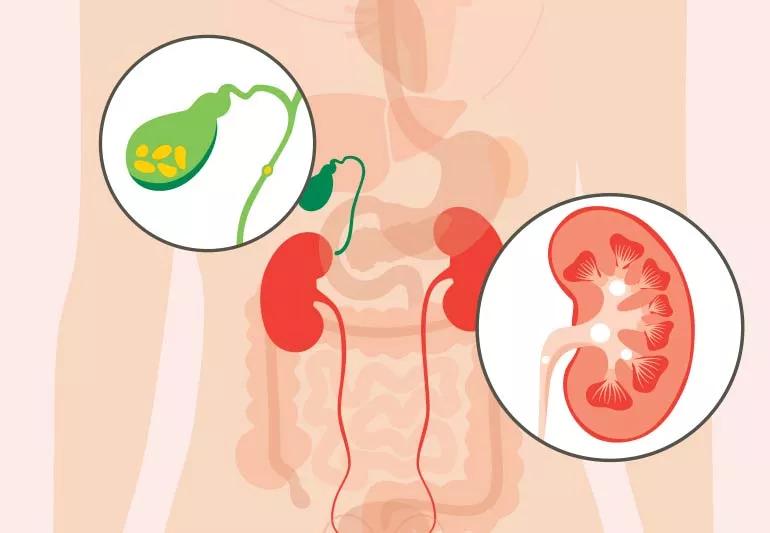Recognizing the Secret Distinctions Between Kidney Stones and Urinary System Infections: A Detailed Introduction for Patients
Recognizing the differences in between kidney stones and urinary system system infections (UTIs) is essential for clients that may be experiencing similar signs yet encounter significantly different health challenges. As we explore these vital elements, it ends up being clear that identifying the one-of-a-kind features of each condition can exceptionally affect individual results.
Introduction of Kidney Stones
The formation of kidney stones, a uncomfortable and commonly incapacitating condition, underscores the critical significance of preserving renal health. Kidney stones, additionally known as kidney calculi, are strong masses that establish from crystals in the urine. These stones can vary in dimension from a grain of sand to a golf sphere and can reside in any kind of part of the urinary tract. The key sorts of kidney stones include calcium oxalate, calcium phosphate, uric acid, struvite, and cystine stones, each with distinct reasons and risk variables.
Numerous elements add to the development of kidney stones. Additionally, metabolic problems and certain clinical problems might predispose people to stone development.
Signs of kidney stones can include extreme flank discomfort, hematuria, and nausea, which typically trigger immediate medical examination. Therapy alternatives differ, varying from enhanced liquid consumption and nutritional alterations to clinical interventions such as lithotripsy or surgical removal, depending upon the size and location of the stones. Recognizing these facets is essential for effective prevention and monitoring.
Review of Urinary System System Infections
Urinary system tract infections (UTIs) represent an usual yet considerable health concern, affecting millions of people yearly. These infections occur when germs go into the urinary system, which includes the kidneys, ureters, bladder, and urethra.
The danger aspects for creating a UTI include sexual activity, specific kinds of birth control, urinary system retention, and a history of previous infections. Uncomplicated UTIs are normally restricted to the bladder and are much more typical in healthy and balanced individuals, while difficult UTIs may involve the kidneys and happen in those with underlying health and wellness issues.
Motivate medical diagnosis and therapy are vital to protect against issues, such as reoccurring infections or kidney damage (Kidney Stones vs UTI). Commonly, UTIs are treated with prescription antibiotics, and safety nets can be utilized for those with regular incidents
Typical Signs Comparison
Signs and symptoms of urinary system infections and kidney stones can often overlap, leading to complication in medical diagnosis. In contrast, kidney stones tend to create serious, sharp discomfort that radiates from the back to the lower abdomen and groin, usually explained as colicky pain.
Additionally, UTIs may be come with by high temperature and chills, especially in extra severe situations, while kidney stones can lead to queasiness and throwing up due to extreme discomfort. While pain throughout urination is a hallmark of UTIs, kidney stones normally offer with even more intense discomfort episodes, which might come and go.
Medical Diagnosis Approaches
How can healthcare professionals precisely distinguish in between kidney stones and urinary system system infections? The analysis procedure starts with a comprehensive medical background and an in-depth testimonial of the patient's symptoms. Clinicians frequently execute a checkup, which may reveal inflammation in the abdominal area or flank area, guiding the analysis path.
Lab tests play an important function in differentiating between these two problems. Kidney Stones vs UTI. A urinalysis can identify the presence of blood, crystals, or bacteria, which are a measure of either problem. In situations of urinary system system infections, the urinalysis may reveal a substantial existence of leukocyte and nitrites, while kidney stones may present with specific crystals
Imaging researches, such as stomach ultrasound or computed tomography (CT) checks, are necessary for picturing kidney stones. These imaging look what i found strategies make it possible for doctor to analyze stone dimension, area, and potential blockages in the urinary system. On the other hand, urinary system system infections normally do not need imaging unless complications are believed.
Together, these diagnostic methods equip healthcare specialists to accurately diagnose and differentiate in between kidney stones and urinary system tract infections, making certain that clients obtain suitable treatment and management.
Therapy Alternatives and Avoidance
While both kidney stones and urinary system system infections (UTIs) require timely treatment, their management methods vary considerably.
The therapy for kidney stones often includes discomfort monitoring, hydration, and sometimes, medical treatments such as extracorporeal shock wave lithotripsy (ESWL) or ureteroscopy to break or eliminate down stones. Individuals are frequently recommended to boost liquid consumption to promote stone passage and decrease reoccurrence. Nutritional modifications might additionally be necessary, depending upon the stone type.
On the other hand, UTIs are mostly treated with antibiotics to get rid of the bacterial infection. The certain antibiotic suggested relies on the germs identified and local resistance patterns. Extra measures, check such as raised liquid consumption and urinary system anesthetics, might assist reduce signs and symptoms.
Prevention strategies vary too; for kidney stones, preserving adequate hydration and adhering to dietary limitations can be effective. For UTIs, preventive techniques include correct hygiene practices, urinating after sexual intercourse, and possibly preventative prescription antibiotics for frequent infections. Comprehending these treatment and prevention methods is necessary for effective management and to decrease the danger of difficulties connected with both problems.
Verdict

Comprehending the distinctions in between kidney stones and urinary system infections (UTIs) is vital for individuals who might be experiencing similar symptoms yet face vastly various health obstacles. The main types of kidney stones consist of calcium oxalate, calcium phosphate, uric acid, struvite, and cystine stones, each with distinctive causes and threat aspects.

Comments on “Comprehensive Guide to Kidney Stones vs UTI: Diagnosis, Triggers, and Alleviation”